 Libri di Masa su Unilibro.it
)
Libri di Masa su Unilibro.it
)
|
|
1999 |
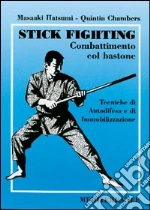 Title :
Stick fighting. Combattimento col bastone. Tecniche di autodifesa e di immobilizzazione
Title :
Stick fighting. Combattimento col bastone. Tecniche di autodifesa e di immobilizzazioneAuthor: Hatsumi Masaaki; Chambers Quintin Publisher: Edizioni Mediterranee Mentre in Occidente non esistono sistemi di lotta basati sul bastone, in Estremo Oriente troviamo un'ampia scelta di tecniche, poiché il bastone occupa da molti secoli un posto d'onore tra gli stili di lotta. Le tecniche descritte in questo libro costituiscono un manuale di autodifesa col bastone, e derivano dal Ryu (sistema) chiamato Kukishin Ryu, un antico metodo giapponese aggiornato e adattato ai giorni nostri. € 10,33
|
|
|
1998 |
 Title :
Mobile Police Patlabor 2
Title :
Mobile Police Patlabor 2Author: Yuki Masami Publisher: Viz € 11,80
|
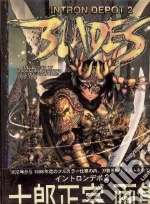 Title :
Intron Depot 2
Title :
Intron Depot 2Author: Shirow Masamune Publisher: Diamond Comic Distributors € 34,50
|
 Title :
Mobile Police Patlabor 1
Title :
Mobile Police Patlabor 1Author: Yuki Masami, Yuki Masami (ILT) Publisher: Viz € 13,10
|
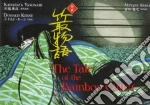 Title :
The Tale of the Bamboo Cutter
Title :
The Tale of the Bamboo CutterAuthor: Kawabata Yasunari, Keene Donald (TRN), Miyata Masayuki (ILT) Publisher: Kodansha Amer Inc Preface by Donald Keene Taketori Monogatari (The Tale of the Bamboo Cutter) was probably written late in the ninth or early in the tenth century. Mention at the end of the tale that smoke still rose from Mount Fuji , a sign it was an active volcano, is an important clue to the date of composition, for we know that by 905 A.D. the mountain had ceased to emit smoke. Regardless of exactly when the tale was first set down on paper, it is the oldest surviving Japanese work of fiction; The Tale of Genji (written about 1010) referred to it as the 'ancestor of all romances.' Many theories have been published about the authorship, but they are little more than guesses. The names of five suitors, resembling those of members of the Japanese court of the eighth century, have suggested to some scholars that the The Tale of the Bamboo Cutter was conceived of as a satire directed against a certain court faction, but this is not how the work was read in later centuries. Today it is thought of mainly as a children's story, and Kaguya-hime, the heroine, looks in the illustrations as lovable as Snow-White or Cinderella; there is no suggestions of the heartlessness that is perhaps her most memorable feature Elements in the narrative recall similar tales from other parts of the world. The tests to which the suitors are subjected resemble the riddles asked by the icy Princess Turandot, or we may recall the three caskets among which the suitors had to choose in The Merchant of Venice. Perhaps the most interesting aspect of the tests Kaguya-hime imposes is the humor with which they are related. The second suitor's lyrical description of the magical island of Horai, where he allegedly found the jeweled branch, is interrupted by the mundane demands of the artisans who actually made it. Again, the fourth suitor, at the end of his unsuccessful quest, urges his men to stay away from the vicinity of the house of 'that thief of a Kaguya-hime.' Such a characterization of the heroine takes us from the realm of the children's story. Many texts of The Tale of the Bamboo Cutter have come down, each with its share of variant. The names of the characters differ somewhat from text to text or even within the same text. The differences are not confined to names: towards the end, when the old man is attempting to prevent Kaguya-hime from being taken off to the moon, he urges his men to shoot anything they see in the sky, no matter how small, and they assure him that they will shoot down 'even a mosquito.' But other texts mention not a mosquito but a bat; perhaps some scribe thought it was a bit too farfetched for anyone to shoot down a mosquito, and changed the word to a larger flying object. There are other problems in the text. Near the beginning the Bamboo Cutter says of himself that he is over seventy years old, but towards the end (twenty years later) we are told that he has just turned fifty. It seems likely that there was a copyist's error, but some scholars, taking the figure given at the end as the Bamboo cutter's real age, have suggested that twenty years earlier, when he was only thirty, he may have been one of the suitors for Kaguya-hime's hand. Such problems in the text should not, however, prevent us from enjoying the storyteller's art. About thirty-five years ago I first published a translation of The Tales of the Bamboo Cutter in the journal Monumenta Nipponica. A few years later-in the summer of 1965-a Japanese publisher conceived the plan of a book that would incorporate my translation, the translation into modern Japanese by the great novelist Yasunari Kawabata, and illustrations by one of the outstanding contemporary Japanese painters. I decided to take advantage of the opportunity to revise my translation. About this time, I visited an exhibition of kirie (paper-cut pictures) by Masayuki Miyata, and discovered that he had actually completed series of works illustrating The Tale if the Bamboo Cutter. I was delighted that at last it would be possible to realize the project first conceived so many years before. There were still further delays, but at last the book has materialized. It combines the work of unknown Japanese writer of over a thousand years ago, the translation by a master of modem Japanese, illustrations by an outstanding artist, and a translation by an American who has devoted his life to the study of Japanese literature. € 27,90
|
 Title :
Mexicolor
Title :
MexicolorAuthor: Levick Melba, Cohan Tony, Takahashi Masako Publisher: Chronicle Books Llc Basking in sunlight and coursing with energy, Mexico enjoys a unique relationship with color-inspired, intrinsic, inseparable from life itself. This vibrance sings forth in the pages of Mexicolor, the collaborative project of an artist, a photographer, and a writer all in love with the brilliant displays of color seen everywhere in Mexico. Walls washed flamingo pink on top, deep matte blue on the bottom. A green flatbed truck heaped with orange marigolds. A sea of colorful skeletons at a Day of the Dead fiesta. The radiant reds, yellows, purples, and greens of the fruits and vegetables at el mercado. Mexicolor explores Mexico high and low, from colonial towns to dazzling beaches, from traditional workshops to contemporary interiors, from open markets to extraordinary homes and inns, uncovering the colorful artistry that permeates everyday life across this vast nation. Mexicolor is an ideal resource for anyone looking to brighten a home, and a beautiful picture book brimming with imagination, creative ideas, and pure pleasure. € 20,70
|
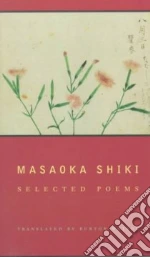 Title :
Masaoka Shiki
Title :
Masaoka ShikiAuthor: Shiki Masaoka, Watson Burton, Masaoka Shiki Publisher: Columbia Univ Pr Here are graceful and timeless poems by one of Japan's greatest modern writers, rendered by a master translator. Masaoka Shiki (1867--1902) is credited with modernizing Japan's two traditional verse forms, haiku and tanka. Born at a time of social and cultural change in Japan, Shiki welcomed the new influences from the West and responded to them by reinvigorating the native haiku and tanka forms. He freed them from outdated conventions, made them viable for artistic expression in modern Japan, and paved the way for the haiku to become one of his nation's most influential cultural exports. Burton Watson's excellent introduction explores the course of Shiki's life: his poverty-stricken childhood, his early love for literature, his education, and his work as a haiku editor for the newspaper Nippon, and as a correspondent during the Sino-Japanese war. Watson details Shiki's long struggle with tuberculosis and its poignant expression in his poetry. Confined to bed for months before his death, Shiki continued to devote his energies to literary pursuits: writing poems and critical essays, and joining with friends and followers who gathered in his sickroom to discuss literature. He died a few weeks before his thirty-fifth birthday. These poems -- more than a hundred haiku, several tanka, and three kanshi -- are arranged chronologically within each genre, revealing the development of Shiki's art and the seamless way in which he wove his life and illness into his poetry. € 31,90
|
 Title :
Riflessioni sull'antico. Studi sulla cultura greca
Title :
Riflessioni sull'antico. Studi sulla cultura grecaAuthor: Masaracchia Agostino; D'Anna G. (cur.); Di Marco M. (cur.) Publisher: Ist. Editoriali e Poligrafici € 68,00
|
 Title :
Impianti sportivi: una proposta per Delle Alpi e Comunale
Title :
Impianti sportivi: una proposta per Delle Alpi e ComunaleAuthor: Masanotti Giuseppe; Montrone Michele Publisher: Beppe Grande Editore € 7,75
|
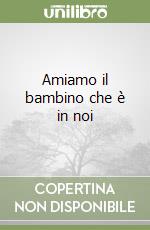 Title :
Amiamo il bambino che è in noi
Title :
Amiamo il bambino che è in noiAuthor: Pas Bagdadi Masal Publisher: Edizioni Scientifiche Italiane € 26,00
|
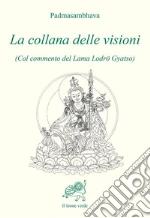 Title :
La collana delle visioni
Title :
La collana delle visioniAuthor: Padmasambhava; Baroetto G. (cur.) Publisher: Il Leone Verde Scritto fondamentale del notissimo maestro indiano del VIII secolo, in cui si espone, in modo semplice ed essenziale, i principi delle nove vie della tradizione buddhista tibetana. Il commento del Lama Lodro Gyatso, oltre che teorico, ha una forte valenza pratica ed esperienziale. € 12,00
Scontato: € 11,40
|
||
|
1997 |
 Title :
Natural Liberation
Title :
Natural LiberationAuthor: Padmasambhava, Rinpoche Gyatrul, Wallace B. Alan (TRN) Publisher: Wisdom Pubns In the spirit of the Buddhist tantric tradition, Natural Liberation examines how to take the commonplace states of consciousness experienced in life and death and turn them into opportunities for the highest liberation. In this work, Padmasambhava, the great 9th century Indian master who established Buddhism in Tibet, describes in detail six life-processes, or bardos, and how to transform them into vehicles for enlightenment. This most extraordinary teaching is here accompanied by meditation instructions and edifying anecdotes in a lucid commentary by Gyatrul Rinpoche, an esteemed teacher of the Nyingma tradition. € 23,10
|
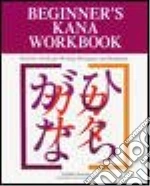 Title :
Beginner's Kana Workbook
Title :
Beginner's Kana WorkbookAuthor: Kaneda Fujihiko, Katayama Masaya (ILT) Publisher: McGraw-Hill Beginning This beginner's workbook helps students learn both hiragana and katakana writing systems. After learning hiragana writing, students move on to katakana. Then they write sentences containing both hiragana and katakana. € 12,80
|
 Title :
Anno's Journey
Title :
Anno's JourneyAuthor: Anno Mitsumasa Publisher: Puffin A pictorial journey through the traditional countryside, farms, and towns of northern Europe takes readers past familiar storybook characters, visual jokes and puzzles, tricks of perspective, and other surprises € 7,50
|
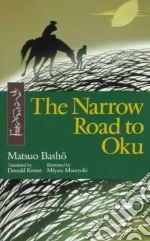 Title :
The Narrow Road to Oku
Title :
The Narrow Road to OkuAuthor: Matsuo Basho, Keene Donald (TRN), Miyata Masayuki (ILT), Basho Matsuo, Keene Donald, Miyata Masayuki Publisher: Kodansha Amer Inc In the account which he named The Narrow Road to Oku, Basho makes a journey lasting 150 days, in which he travels, on foot, a distance of 600 ri. This was three hundred years ago, when the average distance covered by travelers was apparently 9 ri per day, so it is clear that Basho, who was forty years old at the time, possessed a remarkably sturdy pair of walking legs. Nowadays with the development of all sorts of means of transportation, travel is guaranteed to be pleasant and convenient in every respect, so it's almost impossible for us to imagine the kind of journey Basho undertook, 'drifting with the clouds and streams,' and 'lodging under trees and on bare rocks.' During my countless re-readings of The Narrow Road to Oku, I would bear that in mind, and the short text, which takes up less than 50 pages even in the pocket-book edition, would strike me as much longer than that, and I would feel truly awed by Basho's 2,450-kilometer journey. I chose The Narrow Road to Oku as the theme of the exhibition marking the thirtieth anniversary of my career as an artist. As somebody who has been illustrating works from Japanese literature for many years, the subject naturally attracted and interested me. But once I'd embarked on the project, it wasn't long before I realized I'd chosen a more difficult and delicate task than I ever imagined, and I wanted to reprove myself for my naivete. Last year, to mark the centenary of Tanizaki Jun'ichiro's birth, I produced a set of 54 pictures for his translation of The Tale of Genji. This was a formidable undertaking, as I had to grapple with the achievement of a literary genius whom I had personally known. But if producing a single picture to represent each chapter in The Tale of Genji was a matter of selecting a particular 'face,' or 'plane' to represent the whole, producing a picture to represent each haiku in The Narrow Road to Oku was without a doubt a matter of having to select one tiny 'point'-a mere 'dot.' One misjudgment in my reading, and the picture would lose touch with the spirit of Basho's work, and end up simply as an illustration that happened to be accompanied by a haiku. I had to meticulously consider every word in those brief 17-syllable poems. Then, if I was fortunate, from the vast gaps and the densely packed phrases a numinous power would gather and inspire me: at times I felt as if I was experiencing what ancient people called the 'kotadama,' the miraculous power residing in words. A self-styled 'beggar of winds and madness,' Basho originated and refined a unique genre of fictional travel literature, which used poetry that enabled one to render, empty-handedly, all of creation. But Basho also left us the following poem: Journeying is the flower of elegance Elegance, the spirit of travelers long gone: The places seen and recorded by Saigyo and Sogi - All those are the heart of haikai. I believe that I could ask for no greater favor from my painter's brush than that I too be able to glean the merest fragment of what the saint of haiku Basho saw, and be able to reproduce it in my work. Miyata Masayuki € 20,20
|
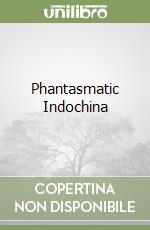 Title :
Phantasmatic Indochina
Title :
Phantasmatic IndochinaAuthor: Norindr Panivong, Chow Rey (EDT), Harootunian Harry (EDT), Miyoshi Masao (EDT) Publisher: Duke Univ Pr This reflection on colonial culture argues for an examination of “Indochina” as a fictive and mythic construct, a phantasmatic legacy of French colonialism in Southeast Asia. Panivong Norindr uses postcolonial theory to demonstrate how French imperialism manifests itself not only through physical domination of geographic entities, but also through the colonization of the imaginary. In this careful reading of architecture, film, and literature, Norindr lays bare the processes of fantasy, desire, and nostalgia constituent of French territorial aggression against Indochina. Analyzing the first Exposition Coloniale Internationale, held in Paris in 1931, Norindr shows how the exhibition's display of architecture gave a vision to the colonies that justified France's cultural prejudices, while stimulating the desire for further expansionism. He critiques the Surrealist counter-exposition mounted to oppose the imperialist aims of the Exposition Coloniale, and the Surrealist incorporation and appropriation of native artifacts in avant-garde works. According to Norindr, all serious attempts at interrogating French colonial involvement in Southeast Asia are threatened by discourse, images, representations, and myths that perpetuate the luminous aura of Indochina as a place of erotic fantasies and exotic adventures. Exploring the resilience of French nostalgia for Indochina in books and movies, the author examines work by Malraux, Duras, and Claudel, and the films Indochine, The Lover, and Dien Bien Phu. Certain to impact across a range of disciplines, Phantasmatic Indochina will be of interest to those engaged in the study of the culture and history of Vietnam, Cambodia, Thailand, and Laos, as well as specialists in the fields of French modernism, postcolonial studies, cultural studies, and comparative literature. € 23,20
|
 Title :
Appartamenti per signore sole
Title :
Appartamenti per signore soleAuthor: Togawa, Masako Publisher: TEA € 7,23
|
 Title :
Taro Ashihara. Program and style
Title :
Taro Ashihara. Program and styleAuthor: Noguchi Masao - Ashihara Taro Publisher: L'Arca € 31,50
|
 Title :
Sono stato nella tua pancia? Come affrontare con intelligenza e creatività le difficoltà tra genitori e figli adottivi
Title :
Sono stato nella tua pancia? Come affrontare con intelligenza e creatività le difficoltà tra genitori e figli adottiviAuthor: Pas Bagdadi Masal Publisher: Edizioni Scientifiche Italiane 'In questo libro desidero offrire ai genitori adottivi un punto di vista affettivo e psicologico sul bambino che hanno accolto o accoglieranno in seno alla loro famiglia. Affronterò in linea generale i passaggi evolutivi più importanti, dagli zero ai tredici anni, per sensibilizzare i neogenitori ad osservare eventuali problemi che si possono presentare nel bambino, tenendo come punto di riferimento la crescita normale...' € 8,00
|
 Title :
Consapevolezza (Rigpa)
Title :
Consapevolezza (Rigpa)Author: Padmasambhava; Baroetto G. (cur.) Publisher: Psiche € 8,00
Scontato: € 7,60
|
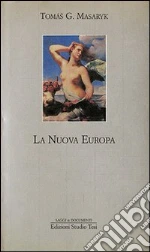 Title :
La nuova Europa. Il punto di vista slavo
Title :
La nuova Europa. Il punto di vista slavoAuthor: Masaryk Tomas Garrige; Leoncini F. (cur.) Publisher: Edizioni Studio Tesi € 20,66
|
||
|
1996 |
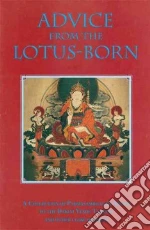 Title :
Advice from the Lotus-Born
Title :
Advice from the Lotus-BornAuthor: Padmasambhava Publisher: Random House Inc Padmasambhava is the primary master of Vajrayana, the teachings for our time. Out of his great compassion and wisdom, he instructed his main disciple Yeshe Tsogyal to conceal terma treasures to be revealed at the destined time for future practitioners. The profundity of this advice is meant to be personally applied by all individuals in all circumstances. Advice from the Lotus Born is a classic work which contains valid truth for anyone who sincerely wants to follow a spiritual path. € 15,10
|
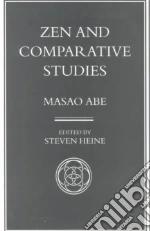 Title :
Zen and Comparative Studies
Title :
Zen and Comparative StudiesAuthor: Abe Masao, Heine Steven (EDT) Publisher: Univ of Hawaii Pr € 18,00
|
 Title :
Giornate di studio su Gennaro Perrotta. Atti del Convegno (Roma, 3-4 novembre 1994)
Title :
Giornate di studio su Gennaro Perrotta. Atti del Convegno (Roma, 3-4 novembre 1994)Author: Gentili B. (cur.); Masaracchia A. (cur.) Publisher: Ist. Editoriali e Poligrafici € 72,00
|
 Title :
Giornate di studio su Gennaro Perrotta. Atti del Convegno (Roma, 3-4 novembre 1994)
Title :
Giornate di studio su Gennaro Perrotta. Atti del Convegno (Roma, 3-4 novembre 1994)Author: Gentili B. (cur.); Masaracchia A. (cur.) Publisher: Ist. Editoriali e Poligrafici € 34,00
|
||
|
1995 |
 Title :
Isocrate. Retorica e politica
Title :
Isocrate. Retorica e politicaAuthor: Masaracchia Agostino Publisher: Gruppo Editoriale Int. € 72,00
|
 Title :
Isocrate. Retorica e politica
Title :
Isocrate. Retorica e politicaAuthor: Masaracchia Agostino Publisher: Gruppo Editoriale Int. € 36,00
|
|
1994 |
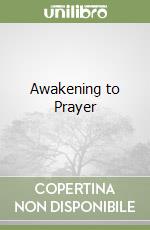 Title :
Awakening to Prayer
Title :
Awakening to PrayerAuthor: Okumura Augustine Ichiro, Kiraki Theresa Kazue (TRN), Yamato Albert Masaru (TRN) Publisher: Ics Pubns € 9,80
|
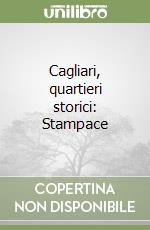 Title :
Cagliari, quartieri storici: Stampace
Title :
Cagliari, quartieri storici: StampaceAuthor: Kirova T. K. (cur.); Pintus M. (cur.); Masala F. (cur.) Publisher: Silvana Stampace rappresenta una realtà complessa e plurisecolare del tessuto urbanistico cittadino. La parte antica testimonia una vocazione essenzialmente lavorativa, ricca come fu, sin dal Medioevo, di botteghe artigiane e confraternite. Per la parte moderna fu invece l'attuale corso Vittorio Emanuele ad assumere importanza come direttrice dello sviluppo ottocentesco, analogamente all'area adiacente al mare, che fa perno sulla Stazione, piazza del Carmine e il Municipio, così come profonde e vistose si rivelarono le trasformazioni post-belliche. € 38,73
|
|
1993 |
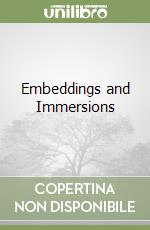 Title :
Embeddings and Immersions
Title :
Embeddings and ImmersionsAuthor: Adachi Masahisa, Hudson Kiki (TRN) Publisher: Amer Mathematical Society € 88,10
|
|

|

|

|

|